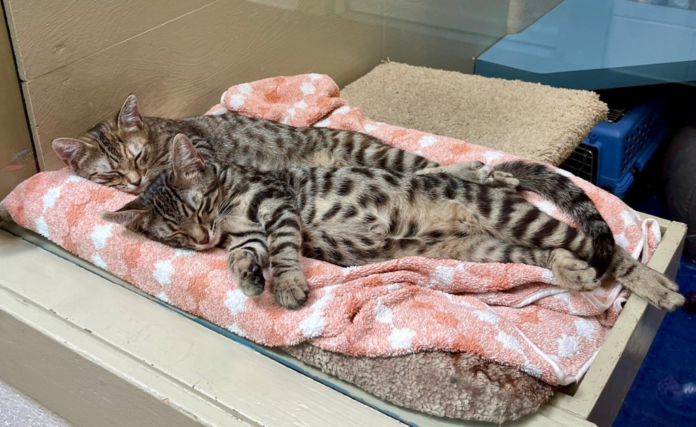I’m approaching my 10-year anniversary here at Marin Humane and I can’t imagine a more perfect job. I’ve learned so much during that time about animals — of course — but also about people, including myself.
An important lesson I’ve learned is that oftentimes us humans think we’re doing the right thing for animals, when in fact our actions, as well-intentioned as they may be, can actually be harmful.
There are a few examples of this but here are my top three:
Someone ‘rescuing’ a cat they see outside
I know it seems counterintuitive if you’re an animal lover, but unless a cat is injured or sick, even if they “look” hungry, it’s best to leave that kitty alone. While I wish people would keep their cats inside exclusively for safety reasons, it’s not illegal to let one’s cat outside. Feeding that “stray” cat only encourages the cat to hang around instead of returning home for dinner. Worse is keeping that cat in your home and deciding they’re now yours without even trying to find the cat’s guardian. And cats brought to shelters, especially if they’re not microchipped, are not likely to be reclaimed by their guardian in the five to seven days before they’re evaluated for adoption because their guardian often assumes they’ve gone on a walk-around. Also, even the best shelters can be stressful for animals, especially cats, that often develop respiratory infections due to that stress.
Nationally, only about 2% of cats brought to shelters end up back home, while dogs are reunited with their families about 30% of the time. We fare better here in Marin County but still, lost cats brought to the shelter only have about a 25% to 30% chance of being reunited with their families and dogs end up back home around 80% of the time.
Feeding wildlife
While it feels like a kind thing to do, feeding wildlife is problematic at best and deadly for them at worst. According to WildCare, feeding wildlife can result in habituation to humans (putting them and our pets at risk as they come closer to our homes), the spread of disease, disruption of nature’s balance, which can lead to overpopulation, an increase in “nuisance” problems for those who do not want wildlife around them (and who will sometimes take inhumane measures to rid themselves of that “nuisance”) and the loss of biodiversity and destruction of habitats.
The fact is that wild animals are quite adept at finding food, especially in this verdant county. They do not need our interference and our desire to “help” or get close to them to have some sort of “magical moment” can actually be a death sentence. As harsh as it sounds, wildlife ecologists often say that “fed wildlife is dead wildlife.”
Judging people who rehome their pets
Related Articles Pets and Animals | Wildlife sleuths use DNA to understand deadly attacks in Santa Cruz Mountains
Wildlife sleuths use DNA to understand deadly attacks in Santa Cruz Mountains Pets and Animals | What can a Bay Area man do to bring native bees to his yard?
What can a Bay Area man do to bring native bees to his yard? Pets and Animals | When your dog takes a snooze, they may be dreaming about you
When your dog takes a snooze, they may be dreaming about you Pets and Animals | Dive into the life (and death) of Elkhorn Slough with “Mother-Daughter Murder Night”
Dive into the life (and death) of Elkhorn Slough with “Mother-Daughter Murder Night” Pets and Animals | Are bothersome Redwood City scrub-jays exacting revenge on homeowners who took down their nest? This is one I’ve definitely been guilty of. It’s easy to judge when you haven’t been in a position where you’ve run out of options and are literally choosing between paying rent or paying for pet food. Or you’ve lost your housing and cannot find any new places that will allow pets. Or a relative has died without making plans for their pets but your children are deathly allergic and you can’t keep the pet.
Time and again, I’ve seen people trying to rehome a pet via Nextdoor to avoid bringing them to a shelter only to be harshly judged by the sanctimonious mob. The only thing that achieves is fewer people using that resource to rehome pets, which means fewer options for that pet’s future.
It’s easy to think we know what’s best for animals — and other people for that matter — but if we take a step back and think through some of these situations, we might see that we don’t always know best. But we can always learn.
Lisa Bloch is the marketing and communications director for Marin Humane, which contributes Tails of Marin articles and welcomes animal-related questions and stories about the people and animals in our community. Find us on social media @marinhumane or email lbloch@marinhumane.org.




